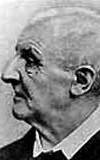1848 - 1900
The construction of the Empress Elisabeth-railroad between Vienna, Linz and Salzburg (1856-60) and Passau (1861) created a connection to the Bavarian rail network.The industrialisation that started in the second half of the 19th century (shipyard, locomotive factory, textile, food and luxury food industries) happened away from the city centre.
1899 - 1903
Construction of the monastery of the Church of the Congregation of the Most Holy Redeemer and the Church of the Sacred Heart on Wiener Straße.
1899
Severe flooding affects large parts of Linz.
1898
The electric mountain railway on thePöstlingberg opens, the steepest adhesion railway in Europe.
1897 - 1900
Construction of a second bridge over the Danube (for road and rail), as well as a railway connecting Urfahr to the National Railway Station.

1897
Electrification of the tram network. Opening of a thermal power station.
The newspaper "Wahrheit" ("Truth") is founded, "Tagblatt" ("Daily Paper") follows in 1916.
1896 - 1898
Construction of the Kaufmännisches Vereinshaus (House of the Commercial Union) on the corner of Landstraße and Bismarckstraße, to plans by Hermann Krackowizer and Ignaz Scheck.
1895 - 1897
Construction of an Episcopal boys seminary ‘Collegium Petrinum’ in Urfahr.
1895
The Provincial Museum "Francisco-Carolinum" is opened by Emperor Franz Joseph I, built to plans by the architect Bruno Schmitz of Düsseldorf.
1894
Construction of a railroad connecting the Western Rail to the banks of the Danube, newly erected on the right bank of the river as part of the regulation of the Danube.
1894
Anton Bruckner is made an honorary citizen of the city of Linz.
1891 - 1893
Construction of the water works Scharlinz and of a municipal water system.

1891
Richard Denemy is born in Linz. Later he changes his name to Richard Tauber and becomes a world-famous opera and operetta singer (+1948 in London).
A regional building society is founded.
1889
A commercial college with three grades opens as a precursor to the state trade school and today's Higher Technical Academy.
1888
Construction of the Mühlkreis Rail to Aigen-Schlägl from the terminus in Urfahr.
1886 - 1892
Construction of the Sparkasse building (bank) on Promenade, to plans by Hermann Krackowizer.
1882
Elevation of the market town Urfahr to rank of town by Emperor Franz Joseph I. Design of the German nationalist ‘Linz Programme’ for a planned ‘German People’s Party’.
1881
The House of Mercy for the terminally ill is founded on Schubertstraße.
1880 - 1882
Construction of the church of the Merciful Sisters of the Holy Cross.
1880
Opening of the horse-drawn tramway from Urfahr to the National Railway Station, electrified in 1897.

1876
Work begins on expanding the canal network.
2nd half 19th century
Systematic extension of the city, especially to the south (to the Western Rail) and the south-west (Neustadt).
1873
Incorporation of Lustenau and Waldegg.
1872
The horse-drawn railway between Linz and Ceské Budejovice closes.
1870 - 1872
Construction of a first iron bridge over the Danube as a replacement for the old wooden bridge, which had been damaged by a ship.
Construction the present secondary school on Spittelwiese to plans by the architect Karl Stattler.
1870
Foundation of a Jewish community in Linz-Urfahr.
1869
The philosopher Robert Reininger is born in Linz.
The „Linzer Volksblatt“ (newspaper) is founded.
1868
Linz's Workers' Education Society is founded.
Commercial Society is founded.
1866
Foundation of a voluntary fire brigade, after the creation of a professional fire brigade in 1851 met with little success.
1863 - 1866
Construction of the General Hospital, although it does not become operational until 1868.
1863
The Poet, essayist and critic Hermann Bahr is born in Linz, ‘the Gentleman from Linz’, as Karl Kraus called him.
1862
Foundation of the ‘Linz Gymnastics Club’.
1861
Austria upstream of the Enns achieves autonomy. Dominik Anton Lebschy, Abbot of Schlägl, becomes first Provincial Governor.
1858
Launch of the western rail route between Vienna and Linz. The line is extended to Salzburg in 1860, the following year the section betweenWels and Passau is completed.
1857
Construction of a gas works for street lighting and private use. Linz is connected to the Empress Elisabeth Railway (the Western Railway); the new station is located in the parish of Waldegg.
1856 - 1868
Anton Bruckner lives in Linz as cathedral and city parish organist.

1851
Foundation of a protestant parish in Linz.
The Chamber of Commerce is founded.
Linz Castle becomes a barracks after being used as a penal facility between 1811 and 1851.
1850
The city receives a local government code based on the Municipalities law of 1849.
Closure of the woollen mill. A tobacco factory is established in its place as an emergency measure for the unemployed workforce.
1849 - 1868
The poet Adalbert Stifter lives in Linz as a schools inspector and influential cultural figure.
1848
Disturbances and street riots in the wake of revolutionary events in Vienna, formation of a National Guard.